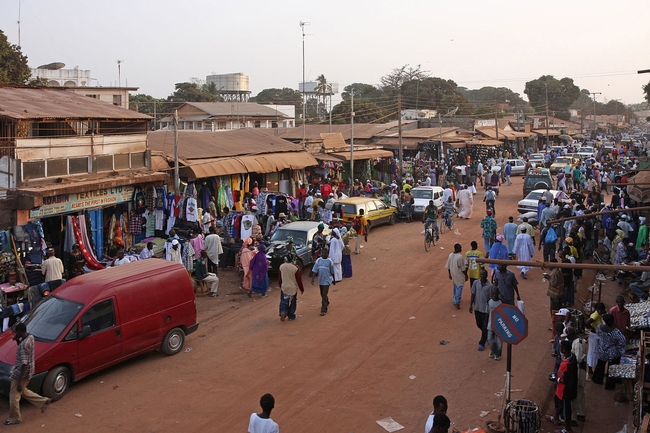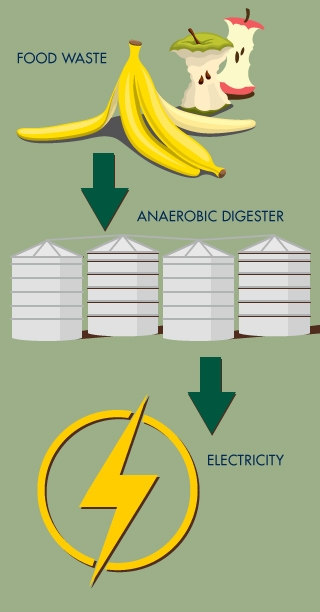Posts Tagged: microbes
Changes in breast milk sugars impact babies’ health and growth
When it comes to nursing moms and their babies, an elegant web of cause and effect connects climate, breast milk, gut microbes and infant health.
That web was clearly illustrated by a recently published study involving 33 women and their babies in the West African nation of The Gambia. The research team, including scientists from UC Davis and UC Agriculture and Natural Resources, found that complex breast milk sugars called oligosaccharides helped protect nursing babies from illness and also influenced the mixture of microbes in the infants' guts.
The researchers also showed that changes in food availability from season to season could affect the composition of the women's breast milk and the protective quality of the babies' gut microbiota. And those changes, in turn, impacted the health and growth of the breastfed infants.
Composition of breast-milk sugars and infant health
Oligosaccharides occur abundantly as more than 200 different chemical structures in human breast milk. It's been known for some time that these complex sugars contribute to infant health by supporting the growth of beneficial bacteria in the baby's gut. And these gut bacteria have been shown to play a key role in fending off infectious illnesses.
But little has been known about how changes in the composition of the breast milk sugars might affect the health and growth of infants, especially those living in areas where infection rates are high.
To explore that relationship, the researchers monitored the composition of the oligosaccharides in the mothers' milk and examined the infants' gut microbiota at 4 weeks, 16 weeks and 20 weeks after the babies were born. Then they analyzed the data, looking for possible relationships to the health and growth of the babies and the status of their gut microbes.
They found that two of the oligosaccharides, lacto-N-fucopentaose and 3′-sialyllactose, had a direct relationship to the babies' health and growth. High levels of the former were associated with a decrease in infant illness and with improved growth, measured as height for age, while the latter proved to be a good indicator of infant growth, measured by weight per age.
“Our findings provide evidence that specific human milk oligosaccharides can alter the composition of breast milk, making it more protective against infection and allowing the infant to invest energy in growth rather than fending off disease,” said the study's corresponding author Angela Zivkovic, an assistant professor of nutrition at UC Davis.
Influence of wet and dry seasons
The researchers also were curious how seasonal shifts in food availability, which significantly impact the mothers' diets, might be reflected in breast milk composition and infant health.
The Gambia has two distinct seasons, the wet season from July to October and the dry season from November to June.
The wet season is also known as the “hungry” season because it is the time of year when food supplies tend to be depleted, infection rates rise and the farming workload is highest. In contrast, the dry, or “harvest,” season is characterized by plentiful food supplies as well as significantly higher energy stores and less illness among the local people.
The researchers found that mothers who were nursing during the wet or “hungry” season produced significantly less oligosaccharide in their milk than did those nursing during the dry season.
In examining the makeup of the babies' gut microbiota, the researchers noted that most of the bacteria belonged to the Bifidobacteria genus. They also discovered that higher levels of Dialister and Prevotella bacteria were accompanied by lower levels of infection.
In addition, higher levels of Bacteroides bacteria were present in the infants' guts that had abnormal “calprotectin” – a biomarker associated with intestinal infections.
“We are very interested in which specific dietary factors influence the oligosaccharide composition of mother's milk,” Zivkovic said. “If we can find the mechanisms that change the composition of breast milk sugars, we may have a new approach for modifying the infant microbiota and ultimately influencing the health and vigor of the nursing baby.”
The study by Zivkovic and colleagues appears online in the journal Scientific Reports. The research is part of a long-running, cross-disciplinary project at UC Davis examining milk and its role in nutrition.
Funding for the study was provided by the National Institutes of Health, UK Medical Research Council, Bill and Melinda Gates Foundation, Alfred P. Sloan Foundation, and Peter J. Shields Endowed Chair in Dairy Food Science at UC Davis.
Biodigester turns campus waste into campus energy
Last week, on Earth Day, the university and Sacramento-based technology partner CleanWorld unveiled the UC Davis Renewable Energy Anaerobic Digester (READ) at the campus' former landfill. Here, the anaerobic digestion technology Zhang invented is being used inside large, white, oxygen-deprived tanks. Bacterial microbes in the tanks feast on campus and community food and yard waste, converting it into clean energy that feeds the campus electrical grid.
“This technology can change the way we manage our solid waste,” Zhang said. “It will allow us to be more economically and environmentally sustainable."
It is the third commercial biodigester CleanWorld has opened using Zhang's technology within the past two years and is the nation's largest anaerobic biodigester on a college campus.
The system is designed to convert 50 tons of organic waste to 12,000 kWh of renewable electricity each day using state-of-the-art generators, diverting 20,000 tons of waste from local landfills each year. It is expected to reduce greenhouse gas emissions by 13,500 tons per year.
The READ BioDigester encompasses several of the university's goals: reducing campus waste in a way that makes both economic and environmental sense, generating renewable energy, and transferring technology developed at UC Davis to the commercial marketplace.
The biodigester will enable the more than 100 million tons of organic waste each year that is currently being landfilled in the U.S. to be converted to clean energy and soil products. The READ BioDigester is a closed loop system, moving from farm to fork to fuel and back to farm. Whatever is not turned into biogas to generate renewable electricity can be used as fertilizer and soil amendments — 4 million gallons of it per year, which could provide natural fertilizers for an estimated 145 acres of farmlands each day.
Nearly half of the organic waste, or feedstock, needed to operate the biodigester to full benefit will come from UC Davis dining halls, animal facilities and grounds. CleanWorld is working with area food processing and distribution centers to supply the remaining amount. Meanwhile, UC Davis will earn 100 percent of the project's green energy and carbon credits and receive all of the electricity generated.
Anaerobic digestion is an age-old process. However, Zhang's patented technology made it more efficient — capable of eating a broader variety and bigger quantity of waste, turning it into clean energy faster and more consistently than other commercial anaerobic biodigesters.
View a video about the UC David biodigester here:
(This blog post is condensed from a UC Davis news release about the biodigester.)
Additional information:
- Read the full press release
- Download biodigester photos
- Vine video: From lunch to lights
- Visit http://www.cleanworld.com/


